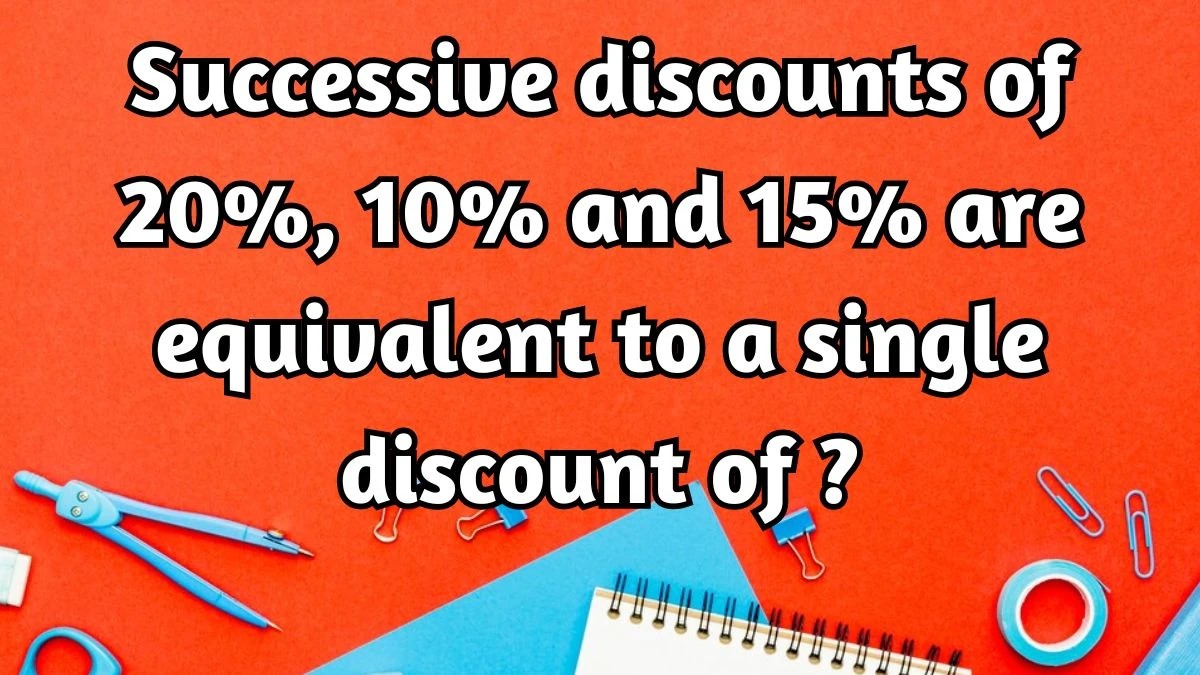Successive discounts of 20%, 10% and 15% are equivalent to a single discount of?
by
Updated Jun 12, 2024

Successive discounts of 20%, 10% and 15% are equivalent to a single discount of?
To understand how successive discounts of 20%, 10%, and 15% are equivalent to a single discount of 38.8%, follow the steps below.
First, we're given the successive discounts of 20%, 10%, and 15%. Let's denote them as X and Y for simplicity.
The formula for successive discounts is:
Successive discount = X + Y – (XY)/100
Calculating First Successive Discount:
Substitute X = 20 and Y = 10 into the formula
Successive discount = 20 + 10 − (20x10)/(100) = 28%
So, the first successive discount is 28%.
Calculating Second Successive Discount:
Now, consider the second discount of 15% along with the first discount of 28%
Successive discount = 28 + 15 − (28x15)/(100) = 38.8%
This calculation shows that the two discounts together are equivalent to a single discount of 38.8%
Equivalent Amount Calculation:
To understand this practically, assume an amount of 100. The successive discount on 100 would be:
100 - 80% of 90% of 85% of 100
This simplifies to 100 - 61.2 = 38.8%
Discounts and Equivalence
Successive discounts refer to a series of discounts applied one after the other to an initial price or value. For example, if you have a product with a marked price and apply multiple discounts to it, those discounts are considered successive. To calculate successive discounts, you add up the individual discount percentages and subtract the product of those percentages from the total. This calculation gives you the equivalent single discount that would achieve the same final price.
Equivalent Single Discount:
The equivalent single discount is the discount percentage that, when applied once to the initial price, results in the same final price as the successive discounts.
Successive discount = X + Y – (XY)/100, where X and Y are the percentages of the individual discounts.
Understanding Equivalence:
When successive discounts are equivalent to a single discount, it means that the total amount saved or reduced from the initial price is the same whether you apply the discounts one after the other or apply a single discount at once. Understanding successive discounts and their equivalence is important in pricing strategies, especially in retail and sales.




